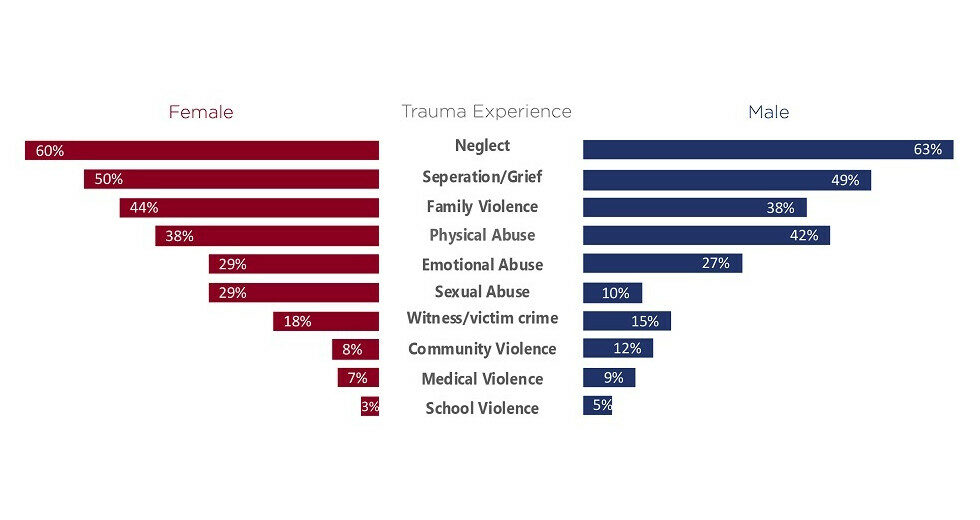Trauma a Contributing Factor to Youth Moving From Child Welfare System to Juvenile Justice System

This study explores the role of trauma, history of child welfare involvement, and other child, family, and community factors among youth who crossed over from the child welfare system into the juvenile justice system. We looked at the relationship between total trauma exposure and likelihood of moving from the child welfare to the juvenile justice system, while accounting for child welfare history and additional child, family, and community factors.
What We Did
We analyzed data from a sample of Chicago area youth born between 1996 and 2002 with child welfare system involvement and a Child and Adolescent Needs and Strengths (CANS) assessment on file. Because we are interested in the role trauma experiences, as measured by the CANS assessment, play in juvenile justice involvement, we include only young people for whom we had CANS information. This resulted in a study sample of youth likely to have had one or more out-of-home foster care placements and an extensive child welfare history. We used administrative records to identify if and when youth experience a juvenile justice system contact, specifically, any instance of arrest, detention, court involvement, probation, or juvenile corrections.
What We Found
- Youth in our study sample report substantial exposure to traumatic experiences as measured by the CANS assessment including child maltreatment, exposure to violence in the family and community, and being a witness to or victim of crime.
- Youth with the least trauma exposure have the lowest rates of arrest, detention, court, and probation, but the pattern is not consistent as trauma exposure increases.
- We found no evidence that greater total trauma exposure, as measured by the CANS, is related to an increased probability of crossover into the juvenile justice system in our study sample.
- Specific patterns of trauma experiences might play a role in crossover. Exposure to violence in the community and at school is related to increased probability of some types of juvenile justice involvement.
- Having a high number of out-of-home placements is another key factor associated with juvenile justice contact.
What It Means
This study’s findings suggest that trauma experiences are only one piece of a complicated puzzle contributing to crossover from the child welfare to the juvenile justice system. These findings highlight the importance of screening for trauma within the child welfare and juvenile justice systems, and across touchpoints, such as detention, court, probation, and corrections. There is also a need to ensure that relevant information about youth, such as trauma concerns or juvenile justice contacts, is available to agency staff as youth move across placements, programs, and agencies. Having this information may enable staff to better serve youth at increased risk for crossover. It is also important for both systems to offer a diverse array of evidence-based, trauma-informed interventions so that, once identified, youth needs can be effectively addressed.



 Thank you for your interest in Chapin Hall’s research. Please share some information to access this file.
Thank you for your interest in Chapin Hall’s research. Please share some information to access this file.